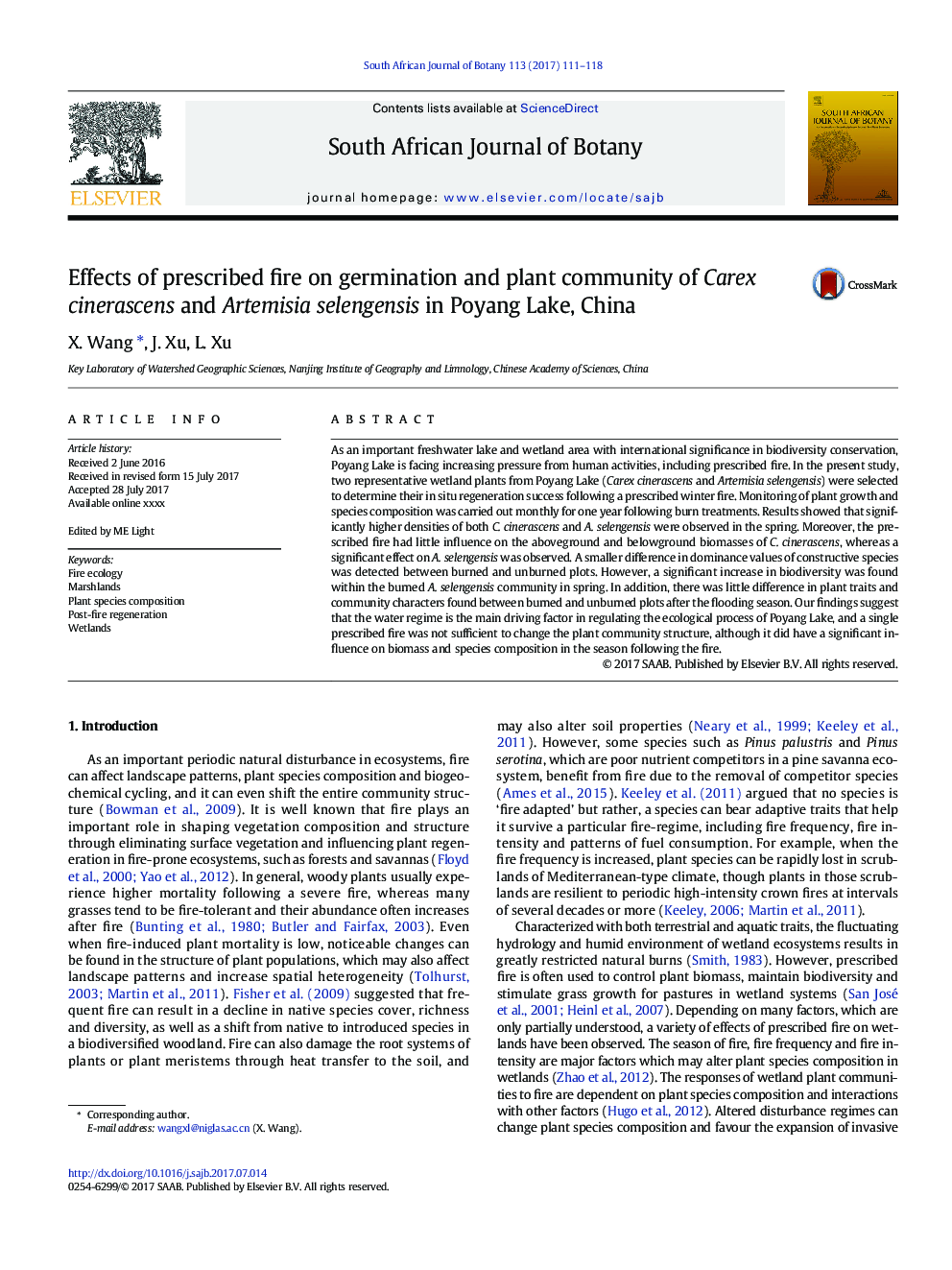| Article ID | Journal | Published Year | Pages | File Type |
|---|---|---|---|---|
| 5762897 | South African Journal of Botany | 2017 | 8 Pages |
Abstract
As an important freshwater lake and wetland area with international significance in biodiversity conservation, Poyang Lake is facing increasing pressure from human activities, including prescribed fire. In the present study, two representative wetland plants from Poyang Lake (Carex cinerascens and Artemisia selengensis) were selected to determine their in situ regeneration success following a prescribed winter fire. Monitoring of plant growth and species composition was carried out monthly for one year following burn treatments. Results showed that significantly higher densities of both C. cinerascens and A. selengensis were observed in the spring. Moreover, the prescribed fire had little influence on the aboveground and belowground biomasses of C. cinerascens, whereas a significant effect on A. selengensis was observed. A smaller difference in dominance values of constructive species was detected between burned and unburned plots. However, a significant increase in biodiversity was found within the burned A. selengensis community in spring. In addition, there was little difference in plant traits and community characters found between burned and unburned plots after the flooding season. Our findings suggest that the water regime is the main driving factor in regulating the ecological process of Poyang Lake, and a single prescribed fire was not sufficient to change the plant community structure, although it did have a significant influence on biomass and species composition in the season following the fire.
Related Topics
Life Sciences
Agricultural and Biological Sciences
Agronomy and Crop Science
Authors
X. Wang, J. Xu, L. Xu,
